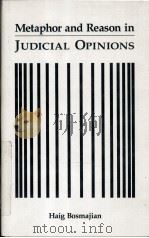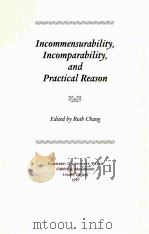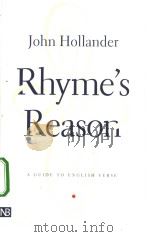《REASON AND AUTHHORITY》
| 作者 | AULISAARNIO 编者 |
|---|---|
| 出版 | ASHGATE |
| 参考页数 | 306 |
| 出版时间 | 1997(求助前请核对) 目录预览 |
| ISBN号 | 1855219336 — 求助条款 |
| PDF编号 | 813694888(仅供预览,未存储实际文件) |
| 求助格式 | 扫描PDF(若分多册发行,每次仅能受理1册) |
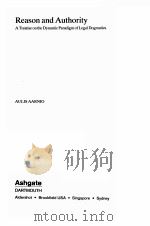
Prologue1
PART Ⅰ: INTRODUCTORY REMARKS7
1 Reason and Authority7
2 What is Law?19
2.1. Law and Society19
2.2. Rigidity or Elasticity?20
2.3. Form vs. Substance of Law25
2.3.1. "Form" vs. "Substance"26
2.3.2. The Structure of Legal Phenomena27
2.3.3. Additional Features of Form28
2.3.4. Advantages of Form29
2.3.5. The Balancing of Advantages and Disadvantages31
2.3.6. The New Coming of Form?33
2.3.6.1. Opening33
2.3.6.2. Form in a Broad Sense (Sensu Largo)33
2.3.6.3. Form in a Narrow Sense (Sensu Stricto)34
2.3.6.4. A Final Remark36
3 Is Law in Crisis?39
3.1. State and Society39
3.2. On the Incrementalism41
3.3. The System and Lebenswelt43
3.4. The Crisis Tendencies45
4 The Dilemmas of the Interpreter49
5 Levels of Understanding51
5.1. A Parable51
5.2. On the Closed Systems52
5.3. Porosity of the System53
5.4. The Pyramid of Understanding54
5.5. An Example56
PART Ⅱ: THE PARADIGM OF LEGAL SCIENCE61
1 Theories on Legal Science61
1.1. In General61
1.2. Alf Ross's Theory of Legal Science62
1.2.1. The Philosophical Background Assumption63
1.2.2. The Legal Philosophical Thesis64
1.2.3. The Functions of the Legal Norm65
1.2.4. Legal Dogmatics as a Legal Science67
2 Legal Dogmatics as a Paradigm-Based Field of Inquiry75
2.1. The Family of Legal Sciences75
2.1.1. Legal Dogmatics75
2.1.2. Sociology of Law75
2.1.3. Historical Study of Law76
2.1.4. Comparative Study of Law77
2.1.5. Summary77
2.2. The Paradigm of Legal Dogmatics: Preliminary Remarks78
2.3. Paradigms as Interpretations of the Matrix84
PART Ⅲ: LEGAL DOGMATICS AS AN INTERPRETATIVE ACTIVITY91
1 Law and Language91
1.1. Semantic Ambiguity in Literature91
1.2. Comparison to the Legal Interpretation93
2 On the Philosophical Background of the Treatise99
2.1. Legal Hermeneutics99
2.1.1. Introductory Remarks99
2.1.2. What Is Hermeneutics About? A Specification of the Viewpoint101
2.2. A Glance at Wittgenstein's Later Philosophy106
2.2.1. The Dimensions of Language106
2.2.2. Language, Thought and Reality107
2.2.3. On the Concept of Language-Game109
2.2.4. The Impossibility of Private Language114
2.2.5. The Relationship Between Language and Reality117
2.2.6. On Certainty119
2.2.7. A Conclusion123
2.3. An Ontological Point of View127
2.3.1. Introduction127
2.3.2. An Example. Legal Fictions128
2.3.3. A Reductionist Point of View130
2.3.4. Conventional Facts134
3 On the Interpretation in Legal Dogmatics143
3.1. Meaning Proposition, Interpretation Proposition and Interpretation Standpoint143
3.1.1. Basic Definitions143
3.1.1.1. Expression and Meaning143
3.1.1.2. Meaning Proposition143
3.1.1.3. Interpretation Proposition144
3.1.1.4. Norm Formulation vs. Norm144
3.1.1.5. Theoretical vs. Practical Propositions145
3.1.2. On Theoretical Propositions146
3.1.2.1. Norm Propositions146
3.1.2.2. Technical Norms146
Primary Technical Norms147
Secondary Technical Norms148
3.1.2.3. Stipulative Definitions149
3.1.2.4. Analytic Definitions149
3.1.3. Practical Propositions150
3.1.3.1. Norm Standpoints150
3.1.3.2. Norm Recommendations152
3.1.4. A Comparison: Norm Standpoint vs. Interpretative Standpoint153
3.1.5. Summary154
3.2. The Concept of Norm155
3.3. Types of Legal Norms160
3.3.1. Regulative vs. Constitutive Norms160
3.3.2. Competence Norms163
3.3.3. Procedural Norms164
3.3.4. Legal Definitions165
3.3.5. Summary165
3.4. Types of Norms in Modern Law165
3.5. On the Validity of Legal Norms167
3.5.1. Existence vs. Validity167
3.5.2. The Variety of Validity Notions167
3.5.3. Systemic Validity168
3.5.4. Factual Validity169
3.5.5. Axiological Validity172
3.6. Rules vs. Principles174
3.6.1. The Strong vs. Weak Demarcation Thesis174
3.6.2. The Linguistic Point of View176
3.6.2.1. Defeasibility176
3.6.2.2. The Categories of Principles177
3.6.2.3. The Scale of Rules and Principles179
3.6.3. Reasoning with Rules and Principles180
3.6.3.1. Principles as "Ought to Be" Norms180
3.6.3.2. Principles as Optimization Mandates181
3.6.4. The Validity Problem184
4 Justification of Legal Interpretations187
4.1. Conceptual Clarifications187
4.2. Why to Justify?188
4.2.1. The Scholar vs. the Judge188
4.2.2. Expectation of Legal Certainty189
4.2.3. On the Reasons193
4.3. Two Types of Justification196
4.3.1. Internal Justification196
4.3.1.1. The Interpretative Point of View196
4.3.1.2. The Structure of the Internal Justification197
4.3.2. The External Justification198
4.3.3. On the Coherence200
4.3.4. External Justification as a Dialogue201
4.4. The "Best Possible" Justification205
4.5. The Concept of Rational Acceptability207
4.6. The Nature and Basis of Rational Discourse209
4.7. The Fundament of Practical Discourse214
5 On the Concept of One Right Answer217
5.1. Final vs. Right Answer217
5.2. The Strong Version217
5.3. The Weak Version217
5.4. A Critical Attitude218
5.5. Towards a Conventionalist Theory of Ethical Relativism220
5.6. The Majority Principle227
5.7. To Conclude229
5.8. The Regulative Principle of Legal Reasoning231
5.9. Several Right Answers?232
PART Ⅳ: THE CHANGE AND PROGRESS IN LEGAL DOGMATICS237
1 Systems in Legal Dogmatics237
1.1. The Concept of Systematization237
1.2. A Critical View240
1.2.1. On the Basic System240
1.2.2. The Formulation of the System242
1.2.3. The Reformulation of the System243
1.3. Summary244
2 The Paradigmatic Change in Legal Dogmatics247
2.1. On the Change and Progress in General247
2.2. Elements of the Theories in Legal Dogmatics253
2.3. Examples of the Change and Progress in Legal Dogmatics255
2.3.1. An Introductory Point of View255
2.3.2. Case Studies256
2.3.2.1. Authorization256
2.3.2.2. Bills of Exchange259
2.3.2.3. Legal Position of the Heir265
2.3.2.4. The Right of Ownership268
EPILOGUE: LEGAL SCIENCE AS A SOCIAL SCIENCE277
1 The Question277
2 What Does a Philosopher Say about the Matter?279
3 A Brief Recapitulation281
3.1. On the Impossibility of Private Language281
3.2. Law as Relations Between People282
3.3. The Becoming Legalized of Social Relationships283
4 Legal Science vs. Social Science285
4.1. General Characterization285
4.2. The Circle Closes286
Bibliography289
Index303
1997《REASON AND AUTHHORITY》由于是年代较久的资料都绝版了,几乎不可能购买到实物。如果大家为了学习确实需要,可向博主求助其电子版PDF文件(由AULISAARNIO 1997 ASHGATE 出版的版本) 。对合法合规的求助,我会当即受理并将下载地址发送给你。
高度相关资料
-

- REASON AND SCEPTICISM
- 1970 ROUTLEDGE TAYLOR & FRANCIS GROUP
-

- Studies in language and reason
- 1981 Macmillan
-
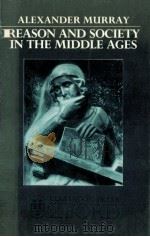
- Reason and society in the Middle Ages
- 1978 Clarendon Press
-

- Democratic education
- 1987 Princeton University Press
-

- FREEDOM AND REASON
- 1963 OXFORD UNIVERSITY PRESS
提示:百度云已更名为百度网盘(百度盘),天翼云盘、微盘下载地址……暂未提供。➥ PDF文字可复制化或转WORD

